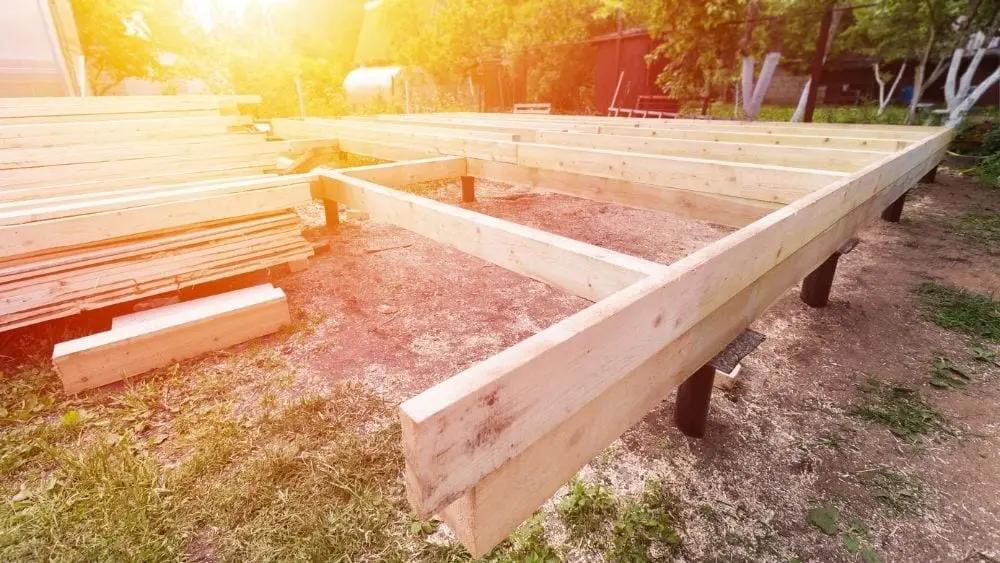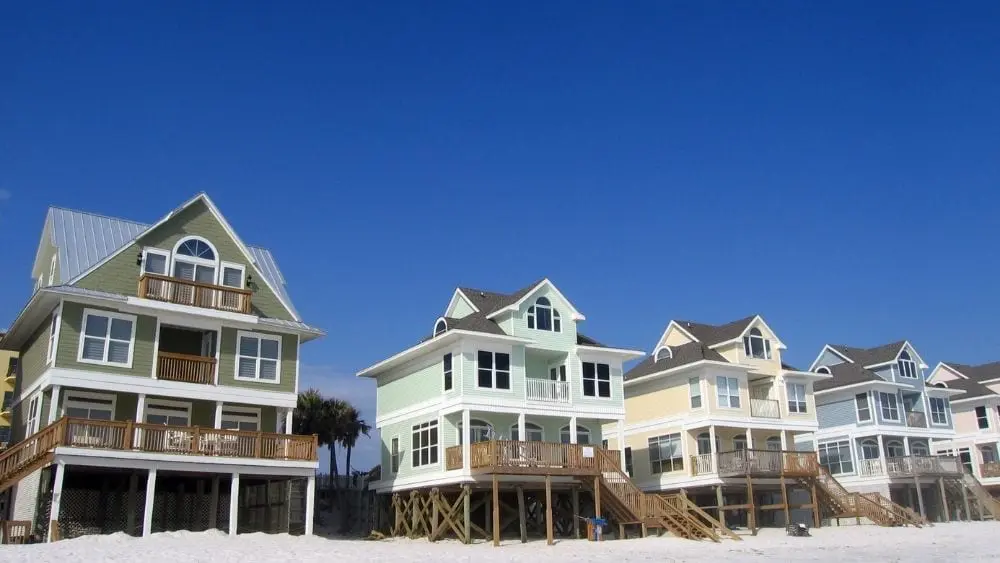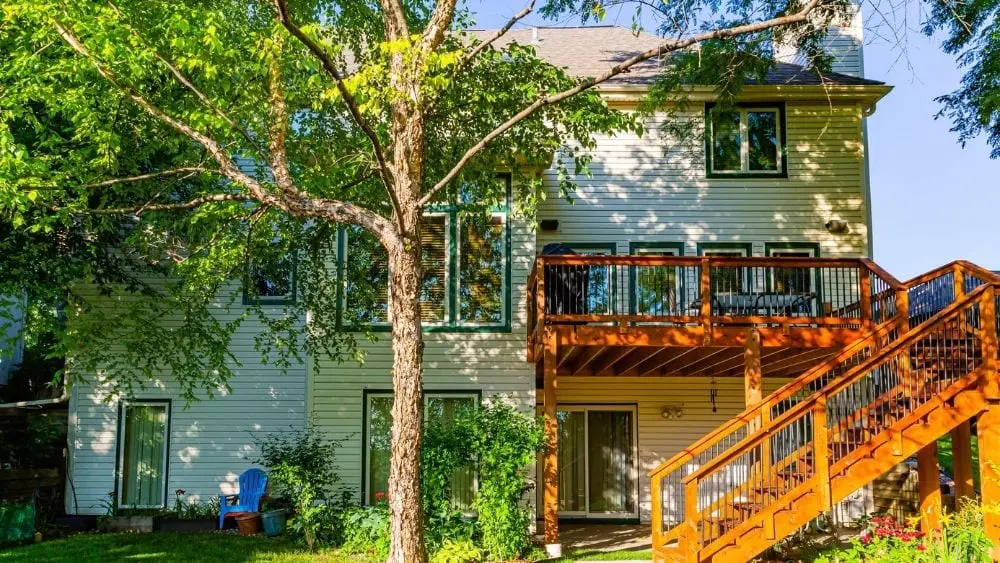
The journey to designing and building your dream home from the ground up begins with a single step: choosing your foundation. It’s an important decision that can make or break your project. A strong foundation that is well-suited for your climate, lot conditions, and lifestyle will support your home for many years.
There are three main foundation types: full basement, concrete slab, and crawlspace. While basements are a great fit for colder regions such as the Northeast and Midwest, concrete slab foundations are often the popular choice in Southern states where high water tables pose a flooding risk for underground construction.
However, there are several reasons why these three more common types may not be the best fit for you and your lot. If your land has unique challenges, it may be harder to choose one that will serve your needs and work within your budget. In these cases, alternative foundation types may offer a creative solution to adapt your construction to your lot and enhance its natural features.
For example, if your lot is on an incline that is too steep for a crawlspace, a daylight or walkout basement may provide a cost-effective solution that integrates your indoor-outdoor space, adds square footage, and increases the value of your home. Depending on the expense for leveling your land, the cost to excavate a daylight basement may be comparable but will offer long-term benefits to enhance your quality of life.
Carefully selecting a foundation type to fit your lot and lifestyle will be well worth the time, effort, and investment. Aside from a full basement, crawlspace, and slab options, I’ve put together a list of alternative foundation types that may help homebuyers who are building on lots on challenging terrain. Hopefully, these ideas will inspire your research and help you find the perfect foundation solution for your dream home.
Pier and Beam

If you’ve been to any beachfront communities and noticed houses that seemed to be on stilts, then you were probably looking at a pier and beam foundation. These are also known as post and pier foundations.
Pier foundations utilize square or circular pads of concrete placed at strategic spots around the building’s structure. These footing pads are dug into the soil and set in the ground for support. They are usually set on a stable subsoil feature such as bedrock, and pressure-treated wood (or concrete) columns are set on top of the footing pads. These columns are connected by girders, which are horizontal beams of wood or steel that support the walls and floor of your home.
Best For…
Pier foundations are likely the catch-all solution for lots with unique challenges. They are excellent for beachfront properties and make great support for vacation homes but may also be an ideal option for rolling hills or mountainous areas. If your envisioned dream home is located on land that is not level and stable, a pier home can compensate for the lack of a flat area to plant your new home.
Suitable Climate and Soil Conditions
You are most likely to see pier foundations in areas with shifting ground or loose soil, such as sandy beaches. Coastal regions, beachfront communities, and floodplains are also ideal to prevent flooding, especially if the beams are at least eight tall. Hilly areas, rocky inclines, and mountainous regions can also be conducive to pier and beam structures. However, they should not be built in areas with frequent earthquakes.
It is also common to see pier foundations in areas that include dense clay soil with high plasticity. A soil analysis conducted by a trained engineer is crucial to determine if the lot can withstand heavy loads and offer safe design with robust support.
Cost and Pricing
On average, pier and beam foundations may cost between $8,000 and $15,000 to build. Depending upon soil composition, materials, home size and design, construction time and labor costs, the total cost can widely vary. Concrete piers, most often used in rocky ground or clay soil, may cost $1,000 each or more, depending on height. Grade beams of wood or steel that run horizontally may cost between $1,500 and $5,000 for steel and between $1,000 and $3,000 for wood. On the plus side, pier foundations offer easy access to plumbing and electrical systems, leading to more affordable repairs or routine maintenance.
General Pros and Cons
Pier foundations are often the best choice for beachfront properties or coastal areas. When designed and installed properly, they provide a robust and safe structure that can be adapted to a variety of land challenges. Easy access to utilities and storage space underneath your post and pier home also provides an added bonus.
These foundations require a skilled structural engineer to design and build to ensure safety and flood protection. They can be expensive, but are worth the investment for lots that have no choice other than to risk tropical storm surges or hurricane damage.
Pile

A pile foundation, sometimes referred to as an elevated slab, combines the slab with a pier and beam system. It consists of pile supports and foundation bracing for added resistance to lateral forces such as wind, floodwaters, and seismic activity. Piles are vertical supports that are embedded in the ground, driven down until they reach a stable support layer of bedrock. The home is then raised off the ground high enough to resist any flooding or storm surges.
Best For…
Pile foundations are well-suited for homeowners who live in areas at high risk for flooding or high water, and who want to rest easy knowing that their home is securely tethered to the ground and resistant to water damage. If stability is a big priority for you and your area, an elevated foundation may be beneficial.
Suitable Climate and Soil Conditions
A suspended foundation is the optimal solution for homes located in floodplains and overall wet climates such as marshes, swamps, or wetlands. Loose soil components and clay soils, which frequently expand and contract, are a great match for a pile foundation.
When the piles are driven deep into the ground, they transfer the weight of the foundation past the top layers of aerated soil to the strong bedrock below. This prevents the foundation from shifting if there is any instability in the soil and anchors it into place during storms and heavy winds.
Cost and Pricing
Installing a pile foundation can be a bit more expensive than standard foundations but could save you money in the long run if you’re looking to protect your home from flood damage. Including labor, equipment, and materials, installation typically costs between $20 and $60 per linear foot of pile, with a minimum cost of $28,000. Depending upon the material you choose, the cost can significantly vary from wood (minimum $13 per linear foot) to steel pipe filled with concrete (between $25 and $45 per linear foot).
Most importantly, piles are not a standalone foundation. You should add the cost of the piles to your primary foundation type (Ex: concrete slab). Piles are used as extra reinforcement in loose soil, or may be utilized to repair worn, bowed, or sagging foundations over time.
General Pros and Cons
Pile foundations are extremely reliable and are a robust solution to flooding and natural disaster risks. This option is ideal for wet climates and loose or clay soil compositions. They can withstand just about anything and will provide you the peace of mind every night that your home can weather the storm.
However, these elevated foundations can be very expensive and take longer to build than standard foundations. With many options of different pile materials, the cost can vary dramatically. If you have room in your budget for installing these supports to elevate your slab, it may still be a worthwhile investment compared to the expense of flood damage repairs.
Daylight or Walkout Basement

Daylight basements and walkout basements are very similar to a full basement but exist partially above the ground. They require a deep hole of at least eight feet with footings placed below frost depth to support the 4-inch-thick concrete slab. Part of the space in a daylight or walkout basement is underground while the remaining space is positioned above ground. Walkout and daylight basements must be situated on an accommodating incline, making them particularly well-suited for hillsides.
A daylight basement provides one or more full-sized windows on its exterior walls, allowing natural light to softly enter the space. A walkout basement offers similar large windows, as well as a door that opens to the outside ground level.
Best For…
If you were planning to incorporate a basement into your new home design only to realize that your homesite is not exactly level, don’t despair! Leveling your site can be expensive and time consuming, but for a comparable cost you could install a daylight basement and enhance the design and value of your home.
Daylight and walkout basements are best suited for individuals and families who desire the additional space without the underground basement vibe. The large windows allow ample sunlight to flow into your space and create a light and airy feel. Any camp house, vacation bungalow, or luxury abode for the adventure lovers may be enhanced by a walkout basement.
Your family can easily store your adventure gear and vehicles for easy access or enjoy a sunlit meal together on the walkout patio. When life gives you an uneven lot, sip your freshly-squeezed lemonade while enjoying gorgeous backyard views from your sunlight-filled walkout basement.
Suitable Climate and Soil Conditions
Similar to full basements, a daylight or walkout basement will require dry soil and mild climate conditions. Since they are usually built on a slope, there is a bit more flexibility and less chance of striking the water table when excavating. Be sure to partner with a skilled contractor who has experience excavating and building daylight and walkout basements who can advise the most advantageous way to avoid flooding concerns.
Cost and Pricing
In general, the cost of building a daylight or walkout basement will vary depending on any required changes to your terrain to create or increase your slope. Building a basement costs on average $10-$100 per square foot, depending on whether they are finished or unfinished.
Installation of a walkout basement door typically costs between $2,500 and $10,000, edging your basement project closer to $100 per square foot. Of course, total costs can vary depending on any extra features that you desire, such as lighting and temperature controls. Some homeowners may even make this a warm and cozy space in the winter by installing a fireplace or adding an indoor hot tub.
An advantage to a walkout basement is the outside entrance, which opens up the possibility for creating a fantastic rental unit. Some homeowners choose to renovate their space to ensure it meets code requirements and then begin to earn back their investment in two to five years.
General Pros and Cons
If your lot happens to be uneven, a daylight or walkout basement may be a cost-effective solution with lasting benefits. These particular basements create a beautiful aesthetic for your new home and offer incredible opportunities to enjoy the best combination of at-home comfort and outdoor adventure.
Both daylight and walkout basements come with the same challenges as a full basement, such as increased construction time and high upfront costs. You should also budget for long-term maintenance expenses.
When constructing daylight and walkout basements, your land must be at the appropriate slope, and grading your lot as part of your site work preparation can come at a price. The most important factor will be to choose a skilled contractor who can install a walkout basement door and windows that function safely and appropriately given the local climate and weather patterns. If your project is not completed properly in the beginning stages, it can lead to costly repairs down the road.
Permanent Wood
A permanent wood foundation includes below-grade walls that are made of pressure-treated, chemically treated wood which resists mold, fungus, rot, ants, and termites. It is also made to withstand high amounts of pressure from environmental loads such as wind, rain, and snow. It can include a crawlspace or a basement below.
Best For…
Permanent wood foundations are an excellent choice for homeowners who want a sturdy and eco-friendly option. Additionally, if your lot is located in a heavily wooded or rocky area with few or small roads for access, wood is the easiest material to transport without a large vehicle. Lodges, cabins, and bungalows situated in remote locations may be likely to have permanent wood foundations since trucks and machinery would have a challenge in bringing cement and other materials.
Suitable Climate and Soil Conditions
These foundations are often standard in northern areas. Wood foundations must be properly treated to resist moisture in the ground. Treated wood can be sustainable for many years if cared for properly. However, areas with oversaturated soil may be cumbersome for permanent wood foundations over time and lead to premature rot. Be aware that treated wood may not repel all critters, so areas with prominent insect populations or rodents may not be ideal for wood foundations.
Cost and Pricing
One disadvantage of permanent wood foundations is the cost, as they tend to be a pricey option. Treated wood is not cheap, but it is durable and built to last. The process to build a wood foundation is fairly simple, so time and labor may be a minimal added cost.
Over the years, the boards can wear down and become susceptible to rot and insect or rodent damage if left unprotected. These foundations require regular maintenance and treatment to remain sustainable. To avoid costly repairs and replacements down the road, homeowners must keep a constant eye out for any problems and address issues early on.
General Pros and Cons
Permanent wood foundations are ideal for building on hard-to-reach sites and remote locations. They provide an eco-friendly solution for energy-minded folks and offer excellent insulation, which may lower your heating costs. Unlike most concrete slabs, wood foundations provide easy access to plumbing and electrical systems that may need repairs. If you decide on renovations at a later date, permanent wood is easier than concrete to move or adjust as needed. Wood is also easy and quick to install at any time of the year, so your construction can be conducted in a timely manner.
The downside of choosing a permanent wood foundation relates to its high cost and necessary routine upkeep. Compared to the low cost of common materials such as cement, treated wood is usually sold at a higher upfront cost and requires long-term expenses. Regular maintenance and retreatment are recommended every few years or so to ensure its protection from the elements.
In stable conditions, wood foundations can last for decades without any major problems or issues. However, you may run the risk of the wood treatment failing or the quality of the wood breaking down over time, making the material susceptible to damage from excessive moisture or pests.
Find Your Foundation Fit
No matter whether your site is based on a rolling hillside or situated in a coastal floodplain, a skilled builder can help you to bring your dream home to life starting with a suitable foundation. If you are planning to purchase a pre-built new home, think about the foundation that you want and the areas where you want to live. Make sure that your investment is built to last with a strong and steady base that will support your family home for many years of adventures to come.

Melanie Theriault is a writer, counselor, and lifelong learner. She holds a B.A. in Sociology from Southwestern University, where she discovered her passion for fostering human connection through storytelling.
 3 Most Common House Foundations
3 Most Common House Foundations